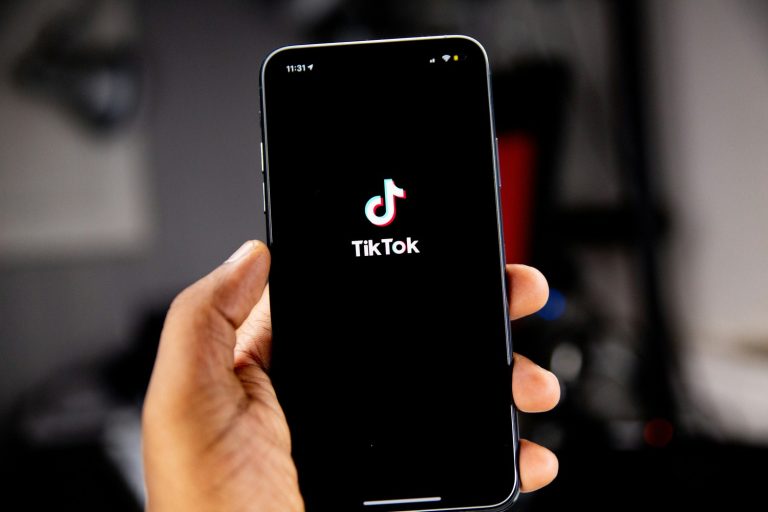TikTok isn’t just for dance trends and viral recipes anymore. It’s become a full-blown resource for everything from mental health advice to side hustle strategies. And lately, personal finance influencers have taken over our “For You” page with flashy, bite-sized tips on how to save serious cash each month. But are these TikTok money-saving hacks actually helpful or just more financial fluff dressed up in aesthetic videos and background music?
We decided to find out. After watching, testing, and comparing 12 of the most viral money-saving TikTok tips, we’re cutting through the hype and giving you the real deal. Some are surprisingly effective. Others? Let’s just say they look better on camera than they work in real life. Here’s the breakdown—tested, so you don’t have to.
1. The “Cash-Stuffing” Envelope Method
Cash-stuffing involves withdrawing cash and allocating it into physical envelopes labeled for different spending categories like groceries, gas, and entertainment. TikTokers claim it helps reduce overspending and brings awareness to financial habits.
Our verdict: This works well…if you’re disciplined and don’t shop online. Physically seeing your money dwindle makes it harder to impulse spend, and it adds a tactile reminder of limits. However, it’s impractical in a digital-first world where many transactions are card-based or contactless. Use a hybrid method: cash for discretionary spending, digital for recurring bills.
2. Rounding Up Your Purchases to Save Automatically
One TikTok hack recommends linking your debit card to an app that rounds up every purchase to the nearest dollar and deposits the difference into a savings account.
Our verdict: This is a quiet but effective way to build savings without thinking. Over time, those pennies add up. The downside? It works best if you spend regularly, which may not be ideal if you’re trying to cut spending altogether. Still, it’s a solid passive-saving strategy.
3. “No-Spend” Challenge Days
This trend encourages you to designate certain days where you spend no money at all. TikTokers swear it builds financial discipline and heightens spending awareness.
Our verdict: Surprisingly effective, especially when you track your progress. It rewires your habits and encourages planning ahead. But be careful. Some users binge spend the day before or after a no-spend day, which defeats the purpose. Use it in moderation and pair it with goal-setting for best results.
4. Meal Prepping to Save on Groceries and Takeout
TikTok meal-prep gurus claim you can save hundreds each month by batch-cooking your meals for the week and avoiding last-minute Uber Eats orders. The best part? There are countless TikTok accounts that have easy, affordable recipes.
Our verdict: Absolutely true. We tested this over four weeks and found savings of nearly $200 by skipping just 2–3 takeout meals per week. The trick is to prep meals you actually enjoy so you’re not tempted to abandon them. A little planning goes a long way toward real monthly savings.
5. The “Unsubscribe From Temptation” Trick
One of the most underrated TikTok hacks? Unsubscribing from retail email lists to avoid being tempted by sales and new arrivals. Is this groundbreaking? No. Does it work? Absolutely.
Our verdict: This one’s a stealth winner. It reduces exposure to impulse-buy triggers and cuts down on the “just browsing” habit that often leads to spending. Less marketing in your inbox = fewer reasons to open your wallet. Quick, easy, and instantly effective.
6. “Revenge Return” Your Regrets
Some TikTokers film themselves returning impulse purchases weeks after realizing they didn’t need them. The trend has been dubbed “revenge returns.”
Our verdict: If you can stay disciplined and return items within the store’s return window, this works like a charm. It reinforces mindful shopping and reminds you that just because you can buy something doesn’t mean you should. Just don’t use returns as an excuse to keep impulse shopping, only to justify it later.
7. DIY Home-Cleaning Solutions Instead of Name Brands
Many TikToks show people making their own all-purpose cleaners using ingredients like vinegar, baking soda, and lemon.
Our verdict: These DIY hacks are highly effective and very cheap. We made four types of cleaners for less than the cost of one branded bottle. The key is doing your research. Some ingredients shouldn’t be mixed (like vinegar and bleach). If you’re health-conscious and frugal, this one’s a winner.
8. Replacing 1 Streaming Service Per Month
One savvy TikToker suggests cycling through one streaming service per month rather than paying for all at once.
Our verdict: Genius-level savings for entertainment junkies. We rotated Netflix, Disney+, and Hulu—watching everything we wanted on one before canceling and switching. We cut $30 a month without really sacrificing content. Requires a little scheduling, but it’s a high-impact, low-effort tip.
9. Secondhand-First Shopping Rule
A popular minimalist TikTok trend involves only buying clothing, furniture, or tech secondhand unless you can’t find it used after 30 days of looking. The best part is that not only does the idea of this save you money, but it’s also extremely sustainable.
Our verdict: This saved us about 40% per item, especially on clothing and small appliances. Thrift stores, eBay, and Facebook Marketplace became our go-to’s. The delay also stopped impulse buying. This one takes patience but delivers consistent savings.
10. Using Store Loyalty Apps to Stack Discounts
Some TikTokers show how stacking store apps with manufacturer coupons, reward points, and rebate apps can lead to serious cash back.
Our verdict: Takes effort, but it absolutely works. We tested this with major retailers like Target and Walgreens and regularly saved 10–25%. The trick is to stack deals the right way and stay organized. It’s a digital-age extreme couponing technique that rewards consistency.
11. “Cash-Only Weekend” Experiments
TikTok users who went cash-only on weekends (no cards, no apps) reported spending less and thinking more critically about their purchases. The idea is that you’re watching your cash dwindle versus having the out-of-sight, out-of-mind mindset when using a card or app.
Our verdict: It’s a useful reset. When we only used cash for weekend spending, we became more intentional about social plans, dining, and entertainment. Even limiting ourselves to $60 made us think twice before hitting “add to cart.” Consider this a low-pressure budget boot camp.
12. Digitally “Hide” Money in a Separate Bank Account
This hack involves automatically transferring money to a hard-to-access savings account that isn’t linked to your daily banking app. One of the best ways to do so is to use an app that takes the money directly from your paycheck, so you never see it to begin with.
Our verdict: It works almost too well. Out of sight, out of spend. We moved $100 a month to a “hidden” online-only savings account, and because it wasn’t visible in our checking dashboard, we completely forgot about it. Best for people who struggle with temptation or mental math budgeting.
Not All TikTok Hacks Are Just Hype
TikTok has a reputation for trendy chaos, but beneath the flashy edits and catchy music are some surprisingly effective financial hacks. Many of these tested tips work because they change behavior, not just budgets. They make saving feel like a habit instead of a sacrifice. That said, not every viral trend is worth your time. Some tips only work if you apply them consistently. Others are situational. But the best ones are those that reduce friction and simplify decision-making without adding pressure or guilt.
If you’re tired of traditional advice that feels outdated or disconnected, TikTok may offer a fresh, relevant way to engage with your financial goals. Just be sure to vet the advice with the same level of scrutiny you’d give to your bank.
Which TikTok money-saving tip have you tried, and did it work for you or fall flat?
Read More:
10 Trendy Buys Fuelled by FOMO That Are Quietly Wrecking Your Budget
8 Reddit Threads Power Shoppers Use to Snag Verified Coupon Drops First
Read the full article here









